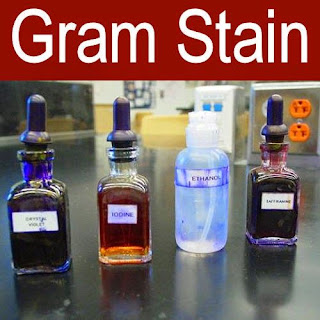GRAM STAIN & ACID-FAST STAIN
Hi and hello this week we going to do the gram stain and acid-fast stain.T he bacterial cells divides into two major groups. Gram positive and gram negative, it is essential tool for classification and differentation of microorganisms. The Gram stain reaction is base don the difference in the chemical composition of bacterial cell walls. Gram-positive cells have a thick peptidoglycan layer, whereas the peptidoglycan layer in Gram-negative cells is much thinner and surrounded by outer lipid- containing layers. Peptidoglycan is mainly a polysaccharide composed of two chemical subunits found only in the bacterial cell wall. These subunits are N-acetylglucosamine and N-acetylmuramic acid. The Gram stain uses four different reagents. Crystal violet (primary stain), Gram’s Iodine (Mordant), Etyl alcohol 95% (Decolorizing agent) and safranin (Counterstain)
Below are the result that we got under the microscope.
 |
| E. coli |
 |
| B. cereus |
While the majority of bacterial organisms are stainable by either simple or Gram staining procedures, a few genera, particularly the members of the genus Mycobacterium , are visualised more clearly by acid-fast method . since M. tuberculosis and M. leprae represent bacteria that are pathogenic to humans, the stain is of diagnostic value in identifying thses organisms.
The characteristics differences between mycobacteria and other microorganism is the presence of a thick , waxy wall that makes penetration by stains extremely difficult. Mycobacteria tend to clump together, and it is difficult to identify individual cells in stained preparations if this clumping effect occurs .To avoid or minimize this phenomenon requires careful preparations careful preparation of the smear. The acid-fast stain uses three different reagents carbol fuchsin (primary stain), acid-alcohol (decolorizing agent) and methlene blue (counterstain).
 |
| M. smegmatis |
 |
| S. aureus |
That's all I can share thank you and goodbye :)









Comments
Post a Comment